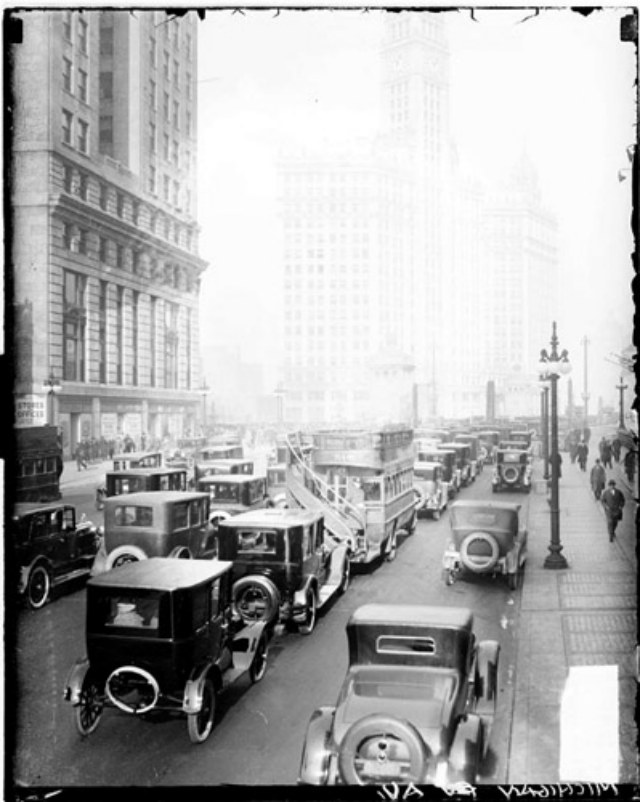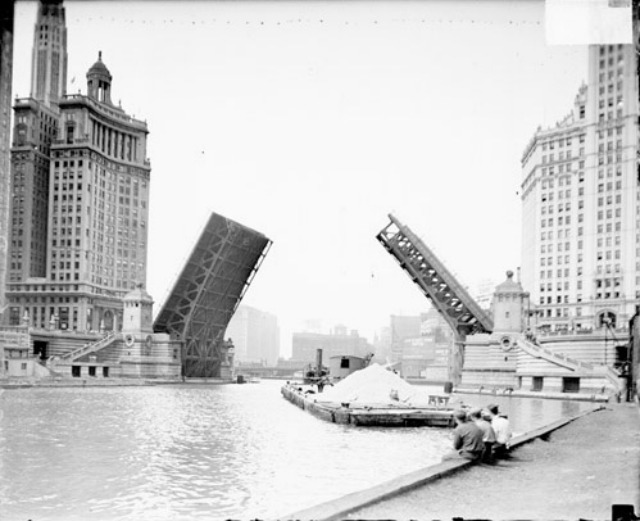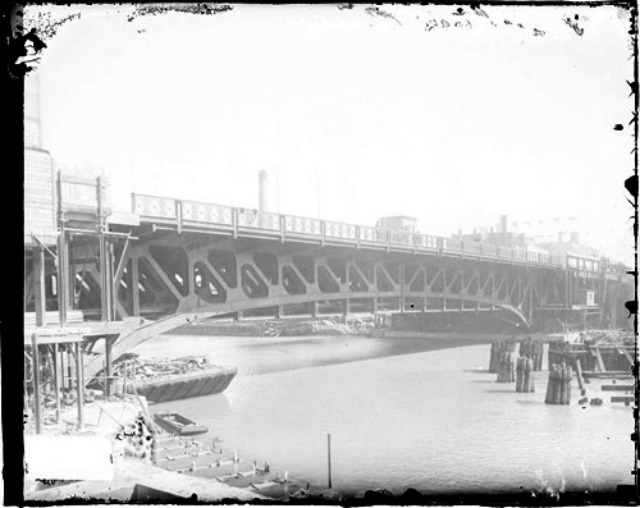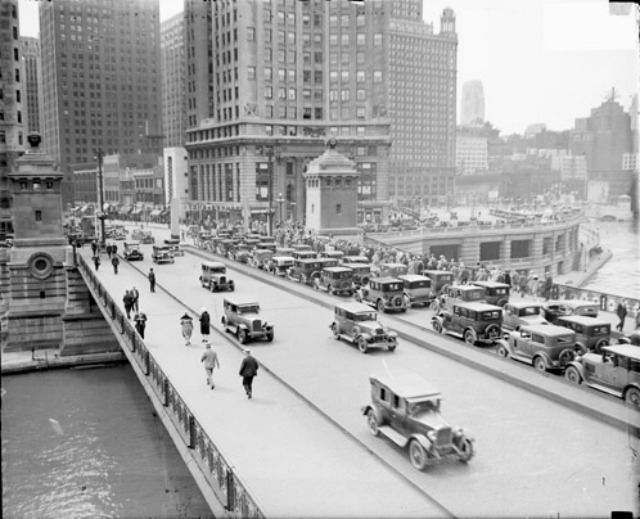One For The Road: Michigan Avenue Bridge Opens
By Chuck Sudo in News on May 14, 2012 10:30PM
On this date in 1920, Mayor William Hale "Big Bill" Thompson cut the ribbon to one of the most iconic bridges in Chicago: The Michigan Avenue Bridge.
Well, that's what we all call it. Its official name (as of October 2010) is the DuSable Bridge after Chicago's founder, Jean Baptiste DuSable; the northern edge of the bridge includes part of the DuSable homesite. The bridge was conceived as a way of connecting the north and south sides of the city via a grand boulevard. Construction began on the bascule bridge in 1918, opened to traffic in 1920, and the bridge's detail was completed in 1928.
In addition to being historic itself—it's a designated city landmark—the bridge is also a keeper of Chicago history. The bridge's sculptures and plaques charts momentous events in the city's history, and exhibits in the McCormick Bridgehouse & Chicago River Museum—housed in one of the bridge tender houses—detail the history of the Chicago River. Edward H. Bennett was the consulting architect and William A. Mulcahy the chief engineer of construction, and it was built by the Chicago Department of Public Works, Bureau of Engineering.
It is believed to have been the first double-deck bridge ever built to have roadway on both levels, with each of the bridge's leaves are divided into two along the axis of the bridge such that it functions as two parallel bridges that can be operated independently of one another. This was designed by necessity; at the time bridges on the River were frequently struck by vessels, and this duplex arrangement allowed for bridge leaves damaged in such a collision to be opened for repair without needing to completely close the bridge to traffic.




